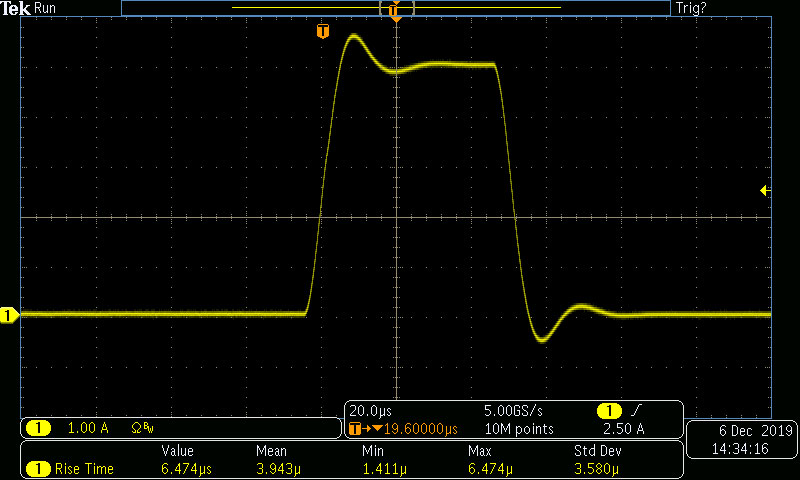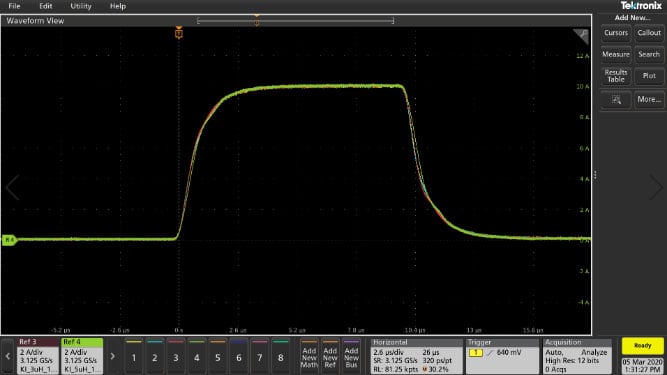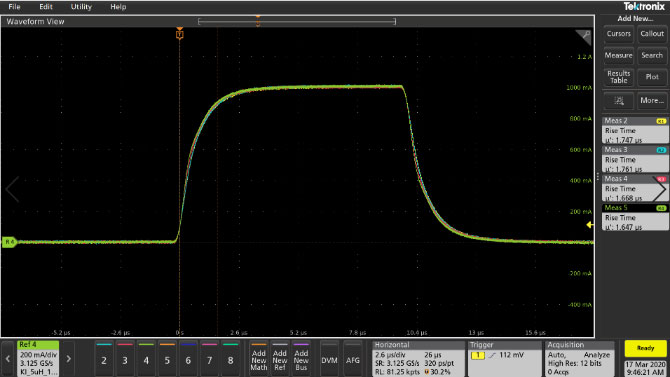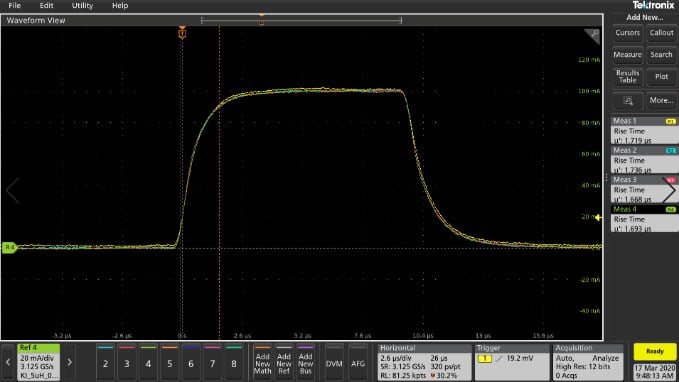

It’s late at night and you’re driving home. You’re tired and just want to get to bed. But then, all of a sudden, you are faced with a big animal in the middle of the road. Immediately, your car slams on the brakes to prevent you from hitting the animal and from swerving off the road. Through the technology of light detection and ranging – better known as LIDAR, your vehicle has protected you from danger.

LIDAR is a 3D sensing method that uses pulsed laser light at various wavelengths to measure variable distances to detect objects in front, behind or on the sides of the vehicle.

At the heart of the LIDAR system is the vertical cavity surface emitting Laser (VCSEL), a semiconducting device that emits laser light vertically from its top surface. A VCSEL discharges the light perpendicularly from the surface, which makes it the perfect device for a LIDAR system.
One advantage of the VCSEL is its manufacturability on a semiconductor wafer, making it easy to test its electrical and optical performance. And, given that a LIDAR system requires thousands of individual VCSELs in arrays to perform its mission-critical application, significant testing must be performed at various stages of the production workflow. By testing at various phases, you eliminate bad VCSELs early on, making the results more predictable and a yield that is more controlled, keeping fabrication costs down.
Here’s the problem: VCSEL testing comes with a long list of challenges, and those challenges are only increasing as the technology advances. The goal of this blog post is to take a closer look at those challenges and how the new 2601B-Pulse Pulser/SMU instrument from Keithley – a Tektronix company – helps designers overcome those challenges.
The Challenges of VCSEL Testing with Conventional SMUs
While conventional instruments like source measure units (SMUs) are commonly used to test VCSELs, the number of testing challenges is growing as the technology continues to advance. Below are five of the most significant challenges.
First, VCSELs used for LIDAR require more power, meaning higher test currents are needed. Introducing higher test currents increases the risk of device damage due to self-heating. This can be problematic when testing on a wafer because it can seriously compromise yield.
Second, pulse current testing on wafer is required to minimize device heating, typically requiring pulse widths in the tens of microseconds and rise times in single-digit microseconds or less.
Third, the length of cables used in test systems and their associated inductances affect the instruments’ ability to source a clean pulse with fast rise time, no overshoot, and no undershoot.
Fourth, for LIDAR applications, the VCSELS are often driven up to 10 A, including in arrays. But the big challenge is generating short pulses, as low as 10 microseconds with very short rise times, often less than 2 microseconds. This is very critical since more than 90% of VCSEL customers require the pulse current waveform to be stable to ensure accuracy of optical peak power, near field and far field measurements.
Fifth, unfortunately, not all Pulser/SMU instruments output high quality pulses. Some are prone to overshoot, long rise times and long fall times. And many of these instruments require manual tuning to improve the pulse waveform shape, especially if they are sourcing current pulses to VCSELs that may have inductance that varies from device to device as well at the test cable inductance.

On top of that, even if the pulse output is tuned at a particular current level, there is no guarantee that the manual tuning will result in consistent pulse waveforms, especially when you are testing a VCSEL with a pulsed IV amplitude sweep. Some Pulser/SMU solutions require a number of tuning parameters such as bandwidth, compensation frequency, zero pole, load impedance and rise time. But tuning the pulse output in production testing is not convenient or efficient on the production floor. Thus, the industry has been requesting companies like Tektronix/Keithley to make faster and higher current sourcing and measuring equipment to deliver the performance they need.
Our customers shared many concerns with us about these issues, telling us:
- We need shorter current pulses, as low as 10 μs but as high as 10 A.
- We have to minimize the pulse widths in order to supply higher currents to test the VCSEL and array.
- We can’t afford to have the device heat up or even risk burning up probe tips.
- Any overshoot in the current pulse could result in device damage.
- I don’t have time to be constantly tuning for the best pulse output.
- If my waveforms are not of high fidelity, this could lead to characterization errors, which could cause poor yields and failures in the field.
Keithley’s Pulser/SMU Solution
Reacting to the challenges we heard from our customers, Keithley has developed the new 2601B-PULSE System SourceMeter®️ 10 μs Pulser/SMU Instrument. The new 2601B-PULSE with PulseMeterTM technology is an industry-leading high current/high speed pulser with measure plus the full functionality of a traditional SMU. This new pulser offers leading 10 A current pulse output at 10 V with a pulse width minimum of 10 μs, perfect for testing VCSELs used in LIDAR, LEDs for lighting and displays, semiconductor device characterization, surge protection testing and so much more.

The pulser’s built-in dual 1 Megasample/second (MS/s), 18-bit digitizers make it possible to acquire both pulse current and voltage waveforms simultaneously without the need to use a separate instrument. The 2601B-PULSE is a powerful solution that significantly boosts productivity in applications ranging from benchtop characterization to highly automated pulsed I-V production testing.
One of the most innovative features of this new instrument is that there is no manual tuning required – no matter the current amplitude and into inductive loads up to 3 μH. When outputting current pulses, cabling and inductance can make things difficult. Inductance can have a limiting effect and can even be damaging. Quite often, the inductance can be different from device to device, even when testing laser diodes on a wafer. The effect of inductance on a current source is that inductance resists changes in current. This can cause the current source to increase the output voltage – resulting in overshoot and ringing as the pulse settles, which may not be acceptable in your test.

As mentioned, some solutions require tuning to compensate for these behaviors, which can be time consuming. The 2601B-PULSE’s control loop system eliminates the need to manually tune for load changes up to 3 μH at any current level up to 10 A so that your pulse has no overshoot and ringing when outputting pulses from 10 μs up to 500 μs. This ensures a fast rise time, so your devices are sourced with a current pulse to properly characterize the device or circuit. This is very important when sweeping pulse currents through multiple amplitudes, as in a VCSEL pulsed LIV test sweep. The images below show the high-fidelity current pulse outputs at various current amplitudes and inductive loads of the 2601B-PULSE.


1 A pulse output on 0 μH, 1 μH, 3 μH loads using the 2601B-PULSE.

It’s clear that the 2601B-PULSE offers industry-leading current pulse output performance and eliminates manual tuning that is not efficient when testing VCSELs on wafers in a high-speed automated probing system. The above plots clearly show that you can test confidently no matter the current level and with different inductive loads to achieve repeatable performance and rise times. The new instrument provides many benefits including:
- Making DC/Pulse current and voltage measurements with a single instrument
- Characterizing VCSELs with confidence, helping you develop the next generation of materials, components, and modules
- No manual tuning of pulse output to ensure high pulse fidelity, reduced testing time and cost savings in production
- Minimizing device self-heating and burned probe tips, thereby protecting your VCSELs, VSCEL array and LEDs
- Measuring down to single-digit μs sampling rates while outputting 10 μs, 10 Amp current pulses at 10 volts
What Testing Challenges are You Facing?
Are you equipped for characterizing VCSELs for LIDAR or other optoelectronic devices and ready to overcome the growing challenges posed by these evolving devices? We welcome the opportunity to talk with you about your pulse testing applications and discuss how the new 2601B-PULSE can help. Please contact us to speak with an Applications Engineer or visit the 2601B-PULSE product page to learn more.


